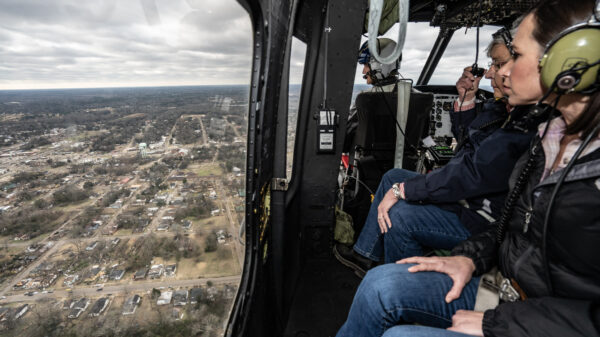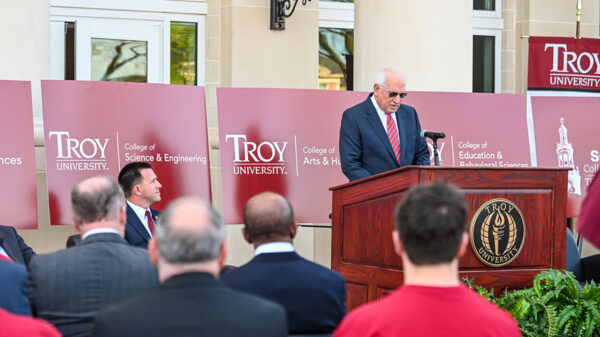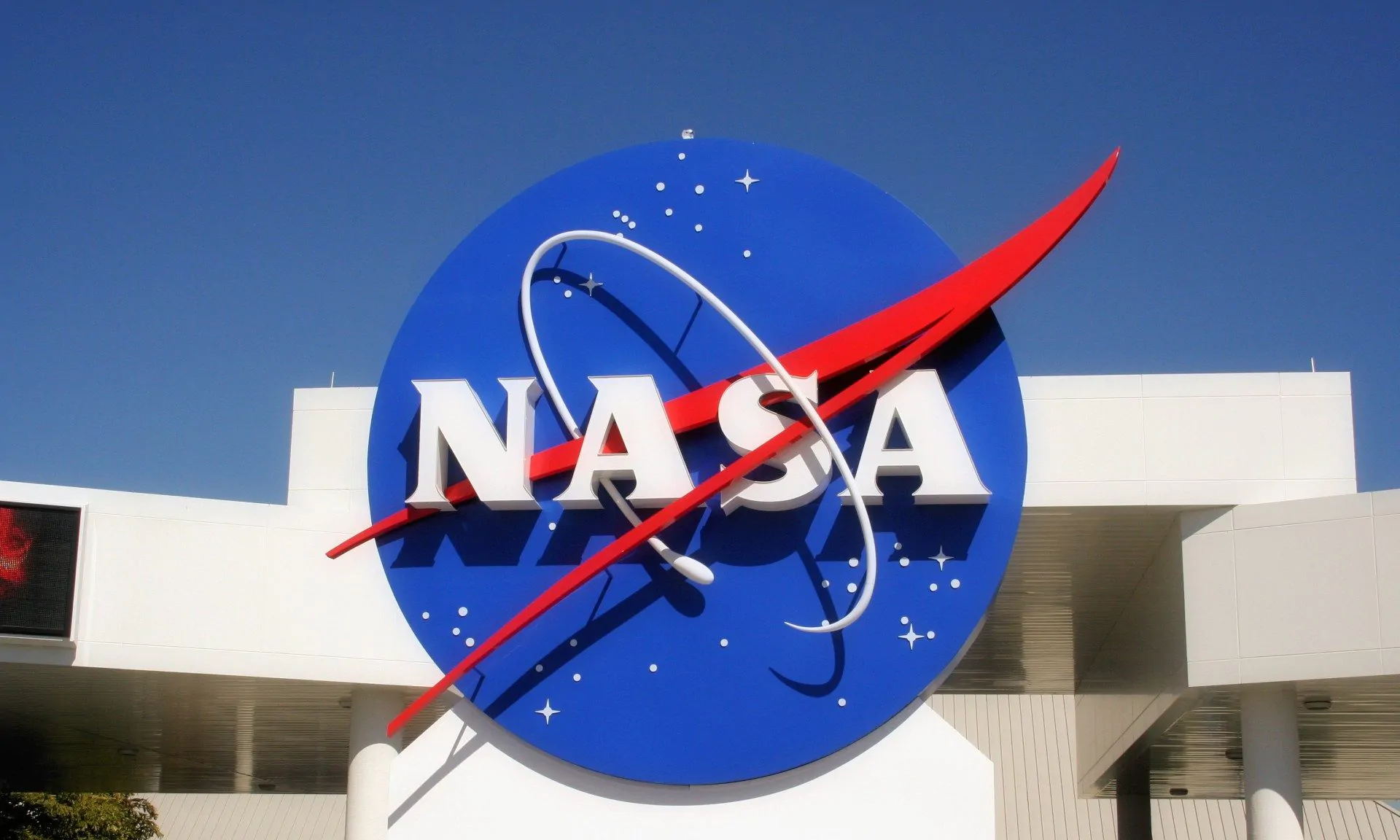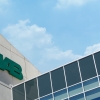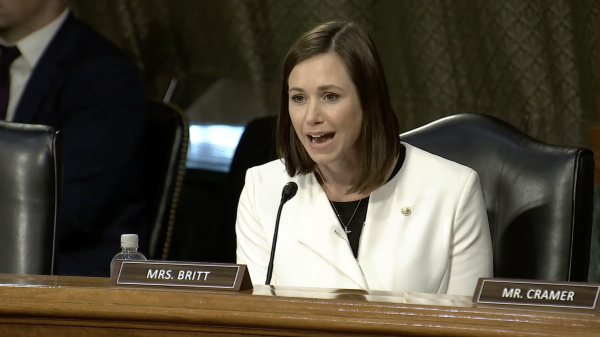On July 16, 1969 a Saturn V rocket was launched that carried Apollo 11 into space and allowed for man to first walk on the moon. Neal Armstrong’s one ‘giant leap for mankind’ occurred 50 years ago next month, but it has been nearly 46 years since the last astronaut walked on moon. Americans under the age of 46 have no direct memory of moon missions outside of the history books and historical documentaries. NASA is determined to change that.
The Space Launch System, which is being designed and developed by engineers based at NASA’s Space Flight Center in Huntsville, will be the launch vehicle that carries American astronauts out of Earth orbit, back to the moon, and beyond.
Thursday, the media is invited to NASA’s Kennedy Space Center in Florida to view the agency’s new mobile launcher as it makes its final roll on crawler-transporter 2 to Launch Pad 39B prior to the launch of the first Artemis mission.
Over the next three months, the mobile launcher will undergo final testing at the pad to certify the systems for launch. Once testing is complete, the next time the mobile launcher makes its trek out to Launch Pad 39B, it will transport NASA’s Space Launch System rocket and Orion spacecraft for the launch of Artemis 1. This unmanned mission is part of the agency’s larger, sustainable Moon to Mars exploration approach.
Artemis is NASA’s program to return astronauts to the lunar surface by 2024, including the first woman to walk on the moon. When they land, our American astronauts will be the first humans ever before to visit the Moon’s South Pole.
NASA is working with U.S. companies, including some with a presence in North Alabama, as well as our international partners. NASA is vowing to push the boundaries of human exploration forward to the Moon. As a result of Artemis, NASA will be able to establish a sustainable human presence on the Moon by 2028 to uncover new scientific discoveries and demonstrate new technological advancements, that will lay the foundation for private companies to build a lunar economy.
President Donald J. Trump (R) has renewed the nation’s focus on expanding humanity’s presence beyond planet Earth. Space Policy Directive-1 provides the direction for NASA to organize more effectively government, commercial and international efforts to develop a permanent presence off Earth that generates new markets and opportunities, both scientific and economic.
Economic developer Nicole Jones told the Alabama Political Reporter, “The Trump Administration is implementing the policies related to space that our president stated we, as a nation, would accomplish. The United States is in the Space Race again.”
NASA’s ultimate goal is to send humans to Mars, and NASA says that Artemis is the first step to begin this next era of exploration.
Jones said, “A few years ago, several members from the public and private sector attended a luncheon featuring Steve Cook, part of the President-elect Trump NASA Transition Team, Mr. Cook, a resident of Madison, Alabama, along with an elite group of space exploration-related professionals and academics, met from November 2016 through January 2017 and designed a strategic plan for the United States’ role in space.”
NASA is working on going quickly and sustainably with a reusable architecture as much as possible. NASA is going with our corporate and international partners to explore faster and explore more together. The moon project will be used to prove out the technologies that will take us to Mars and beyond.
The SLS will take NASA into space and Orion will take our astronauts to deep space to usher in a new era of space exploration. Orion will take us farther than anyone has gone before, and will dock with the Gateway in orbit around the Moon. The spacecraft will carry up to four crew members and is designed to support astronauts traveling hundreds of thousands of miles from home, where getting back to Earth takes days rather than hours.
The Lunar Orbital Platform-Gateway is a lunar-orbit space station, which will serve as a solar-powered communications hub, science laboratory, short-term habitation module, and holding area for rovers and other robots. The power and propulsion element is a high-power, 50-kilowatt solar electric propulsion spacecraft that is three times more powerful than current capabilities. As a mobile command and service module, the Gateway provides a communications relay for human and robotic expeditions to the lunar surface, starting at the Moon’s South Pole.
Both the distance and duration demand that Orion have systems that can reliably operate far from home, be capable of keeping astronauts alive in case of emergencies and still be light enough that the SLS can launch it.
NASA will launch Orion on the SLS, from a modernized spaceport at Kennedy Space Center. On the first integrated mission, known as Exploration Mission-1, an un-crewed Orion will venture thousands of miles beyond the Moon over the course of about three weeks. A series of increasingly challenging missions with crew will follow including a test flight around the Moon before operational missions to the Gateway.
“President Trump and the leadership he has surrounded himself with believe that we [the United States] can marshal our resources properly and lead in space again,” Dr. Jones continued. “Part of that strategy includes public-private partnerships; federal resources (NASA) can focus on exploring the frontier, and the commercial sector can focus on supplying space.”
Thousands of Alabama workers at both Huntsville’s Marshall Space Flight Center and NASA’s corporate partners with facilities in North Alabama are working on the Artemis project.
“The exploration of space is critical to national security and maintaining status as superpower,” Dr. Jones concluded. “And with 50 years of man on the moon upon us, we could not be at a better time in history to embark on this mission.”






















